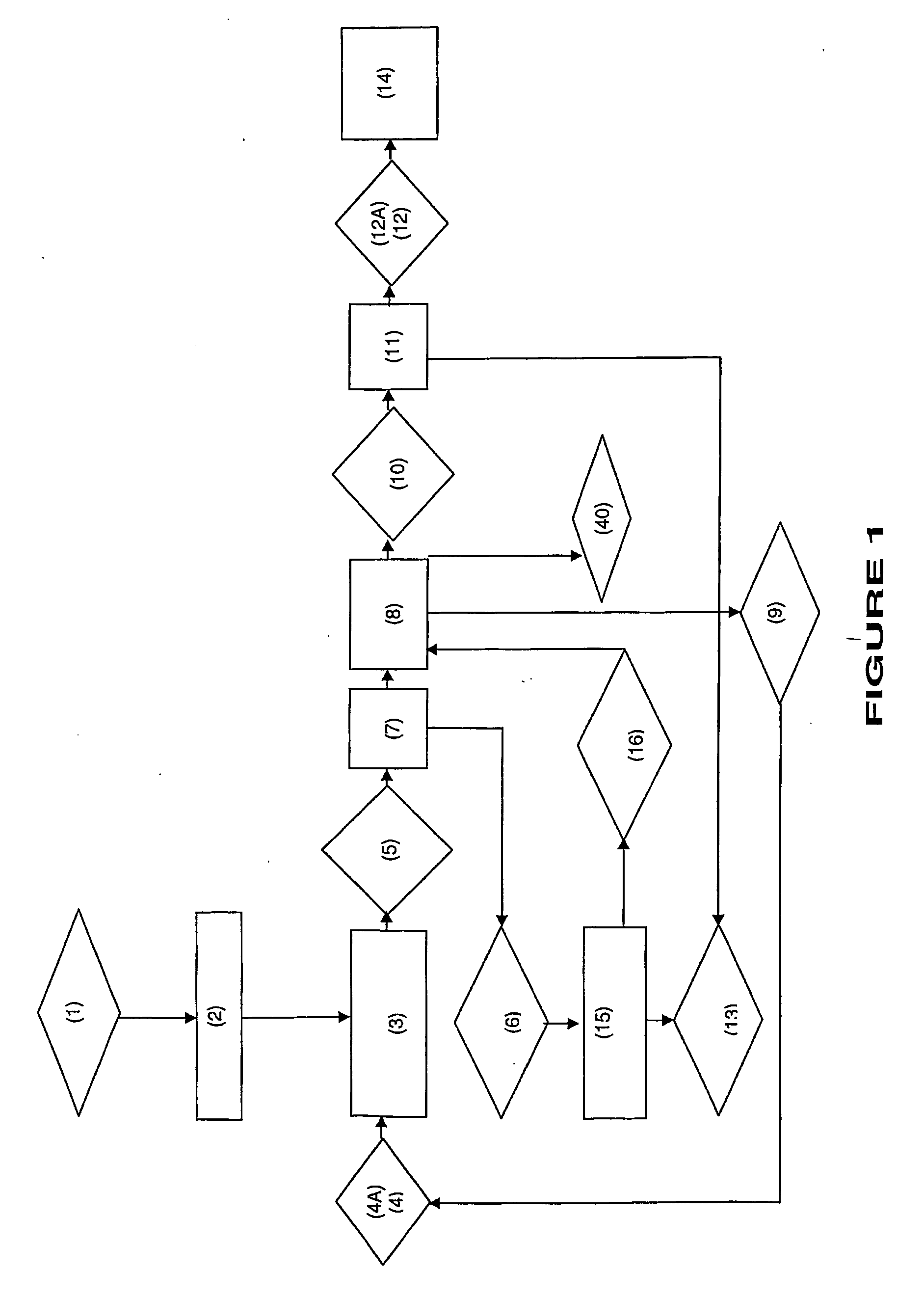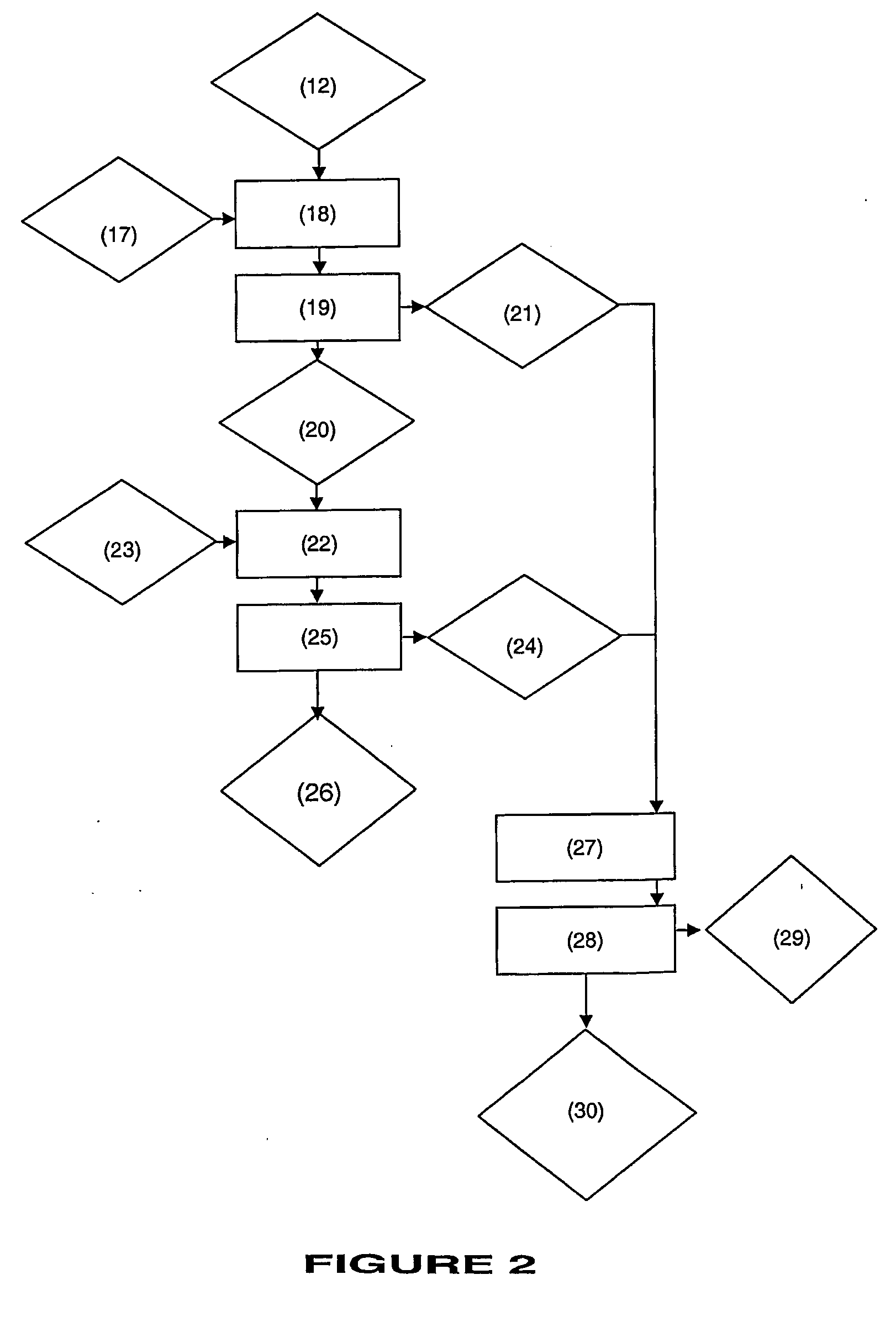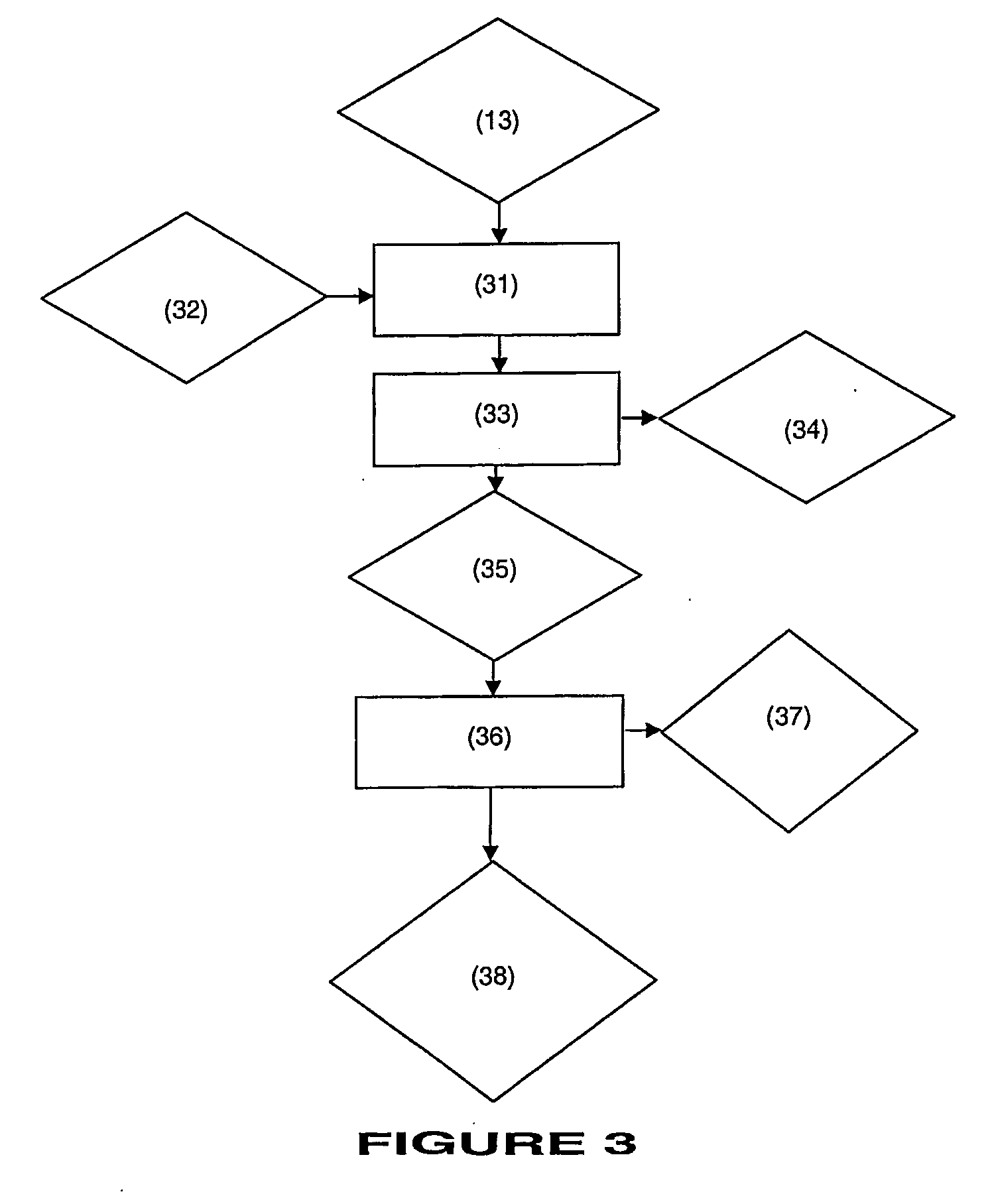Composition
a technology of composition and oil, applied in the field of extracts, can solve the problems of recurrence of problems, rarely treating the underlying cause of skin conditions, and not necessarily stopping symptoms,
- Summary
- Abstract
- Description
- Claims
- Application Information
AI Technical Summary
Benefits of technology
Problems solved by technology
Method used
Image
Examples
example 1
EXTRACTION EXAMPLE 1
[0098] Referring to FIG. 1, preferably meadowfoam seed (1) is used in a dressed dry condition. This can be achieved by cleaning and air drying the seed (not shown), if this is not done at seed harvest.
[0099] A flat roll crusher is used to crush (2) the seed to a flaked condition. The flaked seed is then washed (3) one or more times in solvent (preferably hexane) (4). This dissolves the oils (5) from the seed (6) into the solvent (hexane) (4).
[0100] The step of crushing the seeds (2) can be omitted. However, in practice it has been found that omission produces a lower oil yield.
[0101] The seed (1) can also be cooked (not shown) before being extracted, or before being crushed (2). However, unless it is done to aid other aspects of the process (purification), the yield is not otherwise improved.
[0102] The solvent oil mixture is separated from the seed material (6) by filtration (7) (of known type).
[0103] Solvent distillation (8) is conducted to extract any rema...
example 2
EXTRACTION EXAMPLE 2
[0122] The oil extract from Example 1 is further processed as shown in FIG. 2. The oil extract (12) is mixed (18) with an approximately equivalent quantity of methanol (17). The mixture is then separated (19) (by known means) and both the oil (20) and methanol (21) portions are collected. The oil portion (20) is then mixed (22) again with an approximately equivalent portion of ethanol (23) in a similar manner and once again the ethanol (24) oil (26) mixture is separated (25).
[0123] The resulting methanol (21) and ethanol (24) solutions are then mixed (27) and dried (28).
[0124] Based on infra-red spectrophotometer analysis, light oil fractions (30) remain after drying (28) that are rich in GSL, TCL and ITCL compounds corresponding to infra-red absorption peaks at 2100 wavenumber indicating ITCL, 1260 and 1240 wavenumber indicating sulphonic bonds and 1040 wavenumber indicating sulfoxide bonds corresponding to GSL.
[0125] 2.1 Skin Treatment
[0126] 2.1.1 Psoriasis...
example 3
EXTRACTION EXAMPLE 3
[0128] Referring to FIG. 1 and Example 1 above, the same process is used for producing an oil extract (12A) as in Example 1, however the solvent (4A) used is a binary azeotropic mixture of hexane (79%) and ethanol (21%).
[0129] 3.1 Skin Treatment
[0130] 3.1.1 Psoriasis
[0131] The oil extract (12A) from the process was used to treat an existing psoriasis condition. The results showed a significantly improved healing effect that was as much as three times more effective than the oil extract (12) of example 1 in treating the symptoms of psoriasis.
PUM
| Property | Measurement | Unit |
|---|---|---|
| Temperature | aaaaa | aaaaa |
| Temperature | aaaaa | aaaaa |
| Fraction | aaaaa | aaaaa |
Abstract
Description
Claims
Application Information
 Login to View More
Login to View More - R&D
- Intellectual Property
- Life Sciences
- Materials
- Tech Scout
- Unparalleled Data Quality
- Higher Quality Content
- 60% Fewer Hallucinations
Browse by: Latest US Patents, China's latest patents, Technical Efficacy Thesaurus, Application Domain, Technology Topic, Popular Technical Reports.
© 2025 PatSnap. All rights reserved.Legal|Privacy policy|Modern Slavery Act Transparency Statement|Sitemap|About US| Contact US: help@patsnap.com



